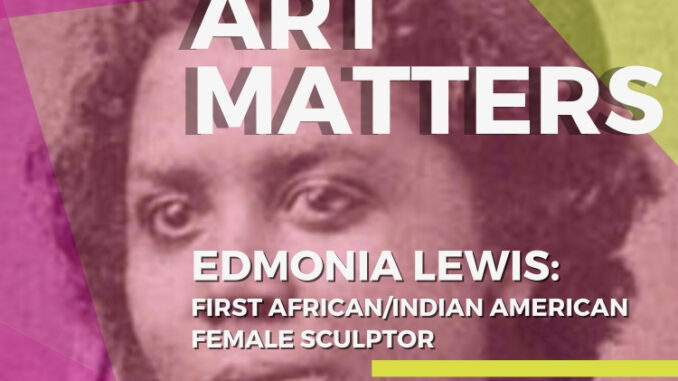
Capri Scarcelli
A&E Editor
10/29/20
Courtesy of Duquesne’s Office of Diversity and Inclusion, Collegiate 100 and Center for Global Engagement, Duquesne in Rome professor Elizabeth Lev was granted the opportunity to give an astounding art history presentation on the story of Edmonia Lewis: the first African-American/Native-American sculptor of the late 1800s.
Lev, a Boston native, is an art historian who studies, writes and teaches the vitality of art’s development from Duquesne’s campus in Rome, specializing in the Renaissance/Baroque period. Lev got her degree in Bologna, Italy, and has lived in Rome for the past 30 years.
Live from Rome at 12 p.m. EST, the Zoom meeting kicked off with study abroad executive director Joe DeCrosta welcoming students interested in traveling to Duquesne’s campus in Italy, where Lev amongst many other professors give culturally diverse lectures from the very heart of European history.
In such a pivotal time as now in our socio-political climate, Lev brought to light how Black artists have paved the way for art as we know it, such as through the impact of Lewis.
In 1876, in honor of America’s 100th birthday, Lewis stunned audiences with her masterpiece “The Death of Cleopatra,” which challenged the preconceived notion of Cleopatra being a romanticized/feminized historical figure.
Though there were other imagined sculptures of Cleopatra that were exhibited, Lewis’ caught the most attention for its stark contrast and suggestive demeanor, symbolizing Cleopatra’s lifeless body as “the death of slavery.”
Lewis studied close details of Cleopatra’s life to incorporate in her work, such as the proper attire, the two children on the throne depicting her twin children with Caesar, the serpent coiled around her hand and the roses climbing the sides.
Born in Greenbush, NY on July 4th, 1844, Lewis was left an orphan at age nine by her Haitain father and Native-American mother; she sought for post-secondary education in her childhood, working her way up to a pre-college program at Oberlin College in Ohio by age 18.
Her first professional drawing was of a statue, which inclined her affinity toward 3D art.
However, in the midst of her education, two white female students accused Lewis of poisoning them, wherein she was kicked out of Oberlin for good. To her luck, John Mercer Langston defended her in court.
After losing the trial, Lewis had the opportunity to meet Frederick Douglass, who told Lewis to go East, even abroad if she had to, to avoid the prejudices and discrimination brought on by white artists in the industry.
Moving to Boston, Lewis caught herself in the midst of the Abolitionist movement, heavily inspired by Lydia Marie Child and William Lloyd Garrison, who cared for her and urged her to pursue sculpting and get her hands on an apprenticeship.
Finding that she was enamored by marble, Lewis decided that her work would be most beneficial in moving to Rome.
In this time period, racism was far more prevalent in America than in Italy. The only racist commentary that Lewis faced in Rome was from American visitors and writers, not native-born residents.
Author Nathaniel Hawthorne, for one, was notoriously racist, making comments against Lewis and other Black female artists for trying to make it in the industry.
According to Lev, Lewis was quoted saying, “I was practically driven to Rome in order to obtain the opportunities for art culture, and to find a social atmosphere where I was not constantly reminded of my color.”
Though lost after her death in 1907, Lewis’ Cleopatra was re-discovered and exhibited in the Smithsonian for spectators to gaze upon in wonder for years to come.
According to Lev, Lewis was “not bitter” about the discrimination she faced as a person of color in the art industry, though instead channeled it to “speak the truth through beauty and reason.”
“She had a calm determination… she didn’t fight or yell, she was a leader who fought for the path no matter the discouragement faced, responding to injustices, responding to language, responding to preconceived notions and changing them to be perceived differently,” Lev said.
“Black women in the arts constantly show they can bring something new to the table and share with others,” Lev said. “There is a long road ahead, but plenty of room to go amaze–– to go and make people feel wonder.”




